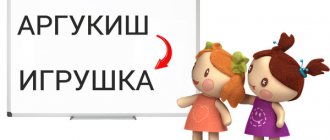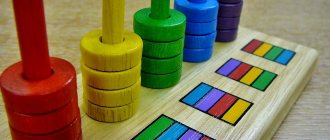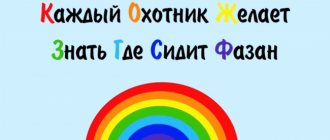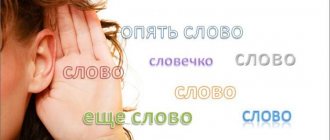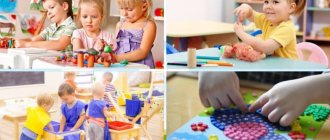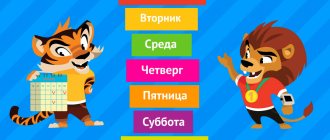Memory is the process of storing, analyzing and recalling past experiences. Thanks to the ability to remember information, a person can accumulate knowledge and evolve. Many details are stored in our minds every day, making it easier for us to make decisions and find a way out of the current situation.
Types of memory
There are several types of memory, depending on the storage period of information, the object of memorization, the form of storing information in memory, etc.
By shelf life
- Instant memory is image memory. Perception of information by the senses, without any processing.
- Short-term. Quickly remember information for a short period of time. This could be a phone number, date, password, address.
- Long-term. Deep memorization of important details that can influence later life. It is formed by separating fragments from short-term memory and moving them by force of will into long-term memory.
By object of memorization
- Visual: retention and reproduction, if necessary, of visual symbols (memory of faces, etc.).
- Auditory: storing sound images and impressions.
- Tactile: retention of sensations obtained when touching something.
- Emotional: preserving the sensations obtained during a shock, a surge of feelings.
- Gustatory: remembering taste sensations.
- Olfactory: perception of smells.
- Motor, or motor: remembering, storing and reproducing various movements.
According to the form of storing information in memory
- Figurative: the brain has the ability to collect scraps of sensory impressions and create images based on them that provide a reference to the necessary information.
- Verbal-logical: remembering and reproducing thoughts in the process of thinking, thinking, reading books, etc.
On the participation of the will in memory processes
- Voluntary: with the application of effort and the formation of a specific goal. For example, when preparing for an exam.
- Involuntary: when information is stored in the head automatically.
On the participation of thinking in memory processes
- Mechanical: thorough memorization of information without one’s own associations and without resorting to personal experience.
- Logical: the main thing is the essence of what you need to remember, without cramming.
- Associative: Using personal experience to connect with new experiences.
Briefly, the information given above can be presented in the form of a table.
| Criterion | Types of memory |
| By information storage period |
|
| By object of memorization |
|
| According to the form of storing information in memory |
|
| On the participation of the will in memory processes |
|
| On the participation of thinking in memory processes |
|
Developing a baby's associative memory
- “I know five... ” The game is to repeat the name of something while hitting the ball. For example: “I know five cities: Moscow one, St. Petersburg two, Vologda three... and so on.”
- "Name a couple" . Give your child 5-6 pairs of words that are related to each other in meaning (for example, soup - spoon, winter - snow, TV - cartoons). Then ask your child to remember the second word from each pair in response to the first. Gradually the number of word pairs can be increased.
Peculiarities of memory of preschool children
Memory development in preschool children occurs involuntarily. As a rule, children do not set themselves the goal of remembering something.
Schoolchildren's memory is already sufficiently developed to build logical chains, analyze information and draw conclusions.
The perception of information directly depends on the age of the child:
0-2 years. In the first year of life, motor memory develops: the child actively remembers gestures and movements and tries to repeat them. From 1 year to 2 years, the central nervous system develops, the amount of memorized information increases;
2-4 years. During this period, the development of mechanical memory occurs. After two years, the child begins to remember more words and build logical chains;
5-6 years. During this period, predominantly involuntary memory is involved: the child can already build on his own impressions and personal experience. He remembers best the information that interested him;
6-12 years old. During this period, long-term memory improves significantly. Children of primary school age are capable of voluntary memorization and are ready to make the necessary efforts to remember what they are given. However, information that is more interesting to them is still absorbed faster.
Photographic memory in a child
Photographic memory is a high level of development of visual memory, at which a person is able to remember and reproduce in detail previously seen images in his mind. People with it are able to receive and process information at amazingly high speeds: they only need to look at the page of a book to remember it, and then retell the text in great detail.
Many scientists studying the work of intelligence are struggling to unravel such a phenomenon as photographic memory, as well as the possibility of its development. It is believed that many famous people owned it: Nikola Tesla, Theodore Roosevelt, Sergei Rachmaninoff. But it is a mistake to believe that possessing this skill is only a lucky coincidence, a feature of genetics. Perhaps some people are truly lucky to be born with such an amazing ability to remember information, but often photographic memory is the result of working on oneself.
It is quite natural that parents would like to develop such a skill in their children. The ability to easily assimilate and apply knowledge will make it easier to complete training and successfully move up the career ladder. Considering that a person is best equipped with skills acquired at an early age, it is better to develop a child from childhood. But is it possible to develop photographic memory, and how can this be done quickly?
There are a number of techniques that offer various exercises for developing this area of intelligence. Many of them have proven their effectiveness, which means that a modern child can develop visual memory to the level of photographic memory, but this cannot be done quickly. It is also important to choose the right training program so that your efforts are not wasted.
Ways to develop memory in children
Special exercises that can be presented to a child in the form of an exciting game help develop memory best. Depending on the information that needs to be remembered, such exercises are usually divided into several types:
- For the development of visual memory.
- For the development of motor and tactile memory.
- For the development of auditory memory.
- For the development of emotional memory.
- For the development of verbal-logical memory.
- For the development of figurative memory.
- On the development of associative memory.
- For the development of logical memory.
It is important to remember that when performing exercises, the child’s age plays a major role. Children have very little attention span. Gradually, the brain grows, and the volume of children's memory increases. Children of older preschool age can remember information well that is useful to them, but motivation is often necessary to improve the result.
To train voluntary memory, you can ask your child every day about what happened today, ask him to compose a story based on pictures, etc.
It is better to try to avoid mindless memorization and cramming. The memorization process can be simplified by reciting the necessary information, drawing pictures on the topic, etc.
Particular attention should be paid to repetition of what has been covered: in order for information to be consolidated in long-term memory, it is necessary to return to it throughout the day. Recommendation for parents: you can read a poem with your child in the morning, repeat it in the evening, and return to what you read every other day.
You should also not forget about rest: the child needs to take breaks, this will increase receptivity, and then you can return to classes with renewed vigor.
Visual memory - what is it?
Visual memory is most often used by a person when receiving information. From childhood, a child examines the world around him and learns its diversity with his own eyes. When he enters the first grade, it is thanks to her that he receives most of his knowledge: from the school board, from textbooks and teaching aids, the child learns mathematical formulas and rules of the Russian language, gets acquainted with literary works and paintings by world-famous artists.
How well a child’s ability to remember is developed directly determines his academic performance. Children who are poorer learners have a harder time than their peers because they spend more time doing class exercises and preparing homework.
A well-developed visual memory is the key to a successful future for a person. Those students who are able to memorize information easily prepare more effectively for passing final exams at school for admission to a higher educational institution. At a university, a student is also faced with large amounts of knowledge in various subjects, which he simply needs to learn and consolidate. Therefore, it is important to develop skills in receiving and processing information.
There are many exercises on the Internet that, according to their creators, can improve visual memory. However, most often, they do not provide a systematic approach, which is simply necessary for such activities. It is important to understand that the highest result of the development of visual memory is the ability to instantly remember what you see down to the smallest detail, as if photographing and storing what you saw in the depths of your own mind.
Games and exercises for memory development
By doing simple exercises every day in a playful way, you can achieve good results. Below are examples of games selected to develop each type of memory.
For the development of visual memory
- “What toy is missing?” Place a few toys in front of your child, then ask him to turn away, remove one or two and ask what has changed.
- “What are the differences?” Finding the difference between two pictures is very useful not only for developing memory, but also for enhancing attentiveness.
- “Describe your friend.” This is a game for a group of kids. Children are asked to look carefully at their neighbor, remember what he looks like, what he is wearing, and then turn away and talk about his appearance.
For the development of motor and tactile memory
- "Restore the sequence." 5-6 pieces of fabric are laid out on the table. A blindfolded child is asked to feel them. Then the pieces of fabric are mixed and the child is invited to place them on the table in the order in which they were originally.
- “Repeat the movements.” This game can be played with one child or with a group. Children need to be shown dance moves, moving from simple to complex, and asked to repeat.
- "Stop on time!" Before starting the game, you need to agree with the child or the group which movement is prohibited (for example, clapping your hands). The game consists of repeating movements after the leader. When the leader makes an illegal move, everyone must stop. Anyone who does not react in time is eliminated from the game.
For the development of auditory memory
- "Repeat the melody." For this game you will need a piano or a toy synthesizer. You can invite your child to turn away and play him 3-4 notes, and then ask him to repeat them, finding them on the keyboard and playing them in the right sequence.
- "Find the odd one out." You need to read several unrelated words to the baby - clearly, making small pauses (for example, apple, coat, bed, etc.). Then ask him to repeat the words that he remembered. Behind
Basic Workouts
Maximum results can be achieved with the help of corrective training. It is recommended to perform them daily, combining 2-5 types of exercises. At the same time, you should not overexert yourself by forcing yourself to study for too long, because... this approach will do more harm. Everything has its own measure.
The presented exercises are aimed at developing visual memory in adults, but can be used for high school students. In the second case, it should be taken into account that not every teenager will be able to cope with some tasks. Therefore, they can be slightly simplified.
Exercise 1
The first exercise is like a mini-training with looking at an object. Its essence is approximately the same, but there are a number of conventions that significantly complicate the task, increasing the effectiveness of classes.
How to do it:
- Examine any object that comes to hand, inhaling air (5 seconds).
- Close your eyes, imagine this object, holding your breath (3 seconds).
- Dissolve the image of the object in your thoughts, exhaling slowly.
The exercise must be repeated many times, changing the rhythm of all actions every 5 times. It is recommended to perform it 2-3 times a day for 10 minutes. Gradually, the time should be increased until the number of repetitions increases to 50.
Exercise 2
This exercise will require outside help. It is advisable that this be one of the close people with whom it will be comfortable to work. If you wish, you can train in both directions, i.e. alternately, changing roles.
The essence of the exercise:
- The assistant writes different words in the form of a diamond on a piece of paper. The top and bottom words should be the shortest, and the length should increase towards the middle.
- The trainee must look at this diamond for 10 seconds, and then reproduce the words he saw on a separate piece of paper.
- At the end of the word, you need to check and determine how correctly the test taker was able to visually remember and write everything.
It is important that the given words are similar and start with the same letter, otherwise it will be very difficult to learn them in such a short period of time.
Exercise 3
Many adults remember how in childhood they solved various puzzles that used matches. In training using this method, they will also be needed, but they will be used to engage attention and figurative memory. To complete the exercise you will need the help of a second person.
How to train:
- The assistant must arrange the matches in such a way as to form a certain figure. It is best to complicate the task by using two or three matches side by side in some places.
- The trainee must look at this picture, but cannot hold his gaze for more than 3 seconds. After this, the assistant should cover the matches with paper.
- The trainee’s task will be to reproduce the picture he saw using other matches, taking into account all its features.
You can complicate the task by including matches of different colors in the picture. The more correctly the trainee composes the image, the better.
Exercise 4
You can practice this exercise to develop visual memory on the way home from work or during an evening walk. No assistance is needed in completing the tasks, which makes the method more versatile and easier. However, you will need to be especially careful during training.
Procedure:
- Stop suddenly, fixing your gaze for a second at any point where there is a sufficient number of different objects that can be remembered. Close eyes.
- Restore figuratively the picture you just saw, remembering as many small details as possible. Hold it in your head for several minutes, filling it in from memory.
When attempts to remember are completed, you can visually evaluate reality and compare it with what was formed in your thoughts.
Exercise 5
The last exercise will also allow you to use your imagination and general intellectual capabilities. It must be performed outdoors, because... you will need to see other people. The method involves creating figurative stories in your head, which will be based on real people you have seen.
Performing the exercise:
- Choose a suitable bench on the street where it is not too noisy.
- Pay attention to any passerby, remember his appearance.
- Close your eyes, imagine how he moves on and what will happen.
It’s best to start with visualizing a simple walk, and only then come up with more detailed and unusual situations. You shouldn’t try too hard and write long stories either, unless the goal is to develop imagination.
If you perform these exercises only occasionally, you will not be able to achieve the desired result. Only regular training will be beneficial.
General recommendations for memory development in preschoolers
Games and exercises undoubtedly help develop a child's memory. However, developed memory is not only about daily hard work. We should not forget about the simplest things, on which the result also depends:
- about proper nutrition;
- about full, healthy sleep;
- about walks;
- about compliance with the daily routine;
- about physical activity.
All these points are extremely important for increasing concentration in classes and stimulating mental activity.
conclusions
A child’s memory is constantly improving throughout preschool age. Initially involuntary and mechanical memorization gradually becomes a conscious process, and the volume of memory increases. The adult’s task is to help the child maximize his abilities in a playful way. Using the games we describe, you can develop your child’s auditory, visual, tactile and motor memory. But do not forget that childhood is a carefree, happy time, and there is no need to overload your child with constant exercises.
How to develop long-term memory?
Human memory is quite subjective, since after each subsequent reproduction of information, memories are distorted.
The task of parents is to develop and train the child’s long-term memory. To do this you need:
- Teach your child the ability to compare objects of memorization, find similarities and differences in them (children's magazines with colorful pictures and tables are suitable for training, in which you are asked to find either identical objects or find subtle differences in them);
- Practice retelling by the child any information he has received - a cartoon he has watched, a story he has read, an experience he has experienced (trains memory, develops speech, allows him to correctly compose sentences);
- Learn poems, tongue twisters, solve crosswords;
- Gradually move on to memorizing prose (one interesting exercise can be suggested here). For example, read a small passage of text in a magazine and cut out this fragment. Then cut it into pieces, give the child one part and offer to reconstruct the entire plot from it.
How to train visual memory of preschool children?
After the examination, it will be easy for parents to assess the level of visual perception in their preschooler and select educational games or exercises for home activities. The main thing is that they must remember the features of carrying out exercises for the development of a child:
- Tasks must correspond to the level of development, their complexity increases gradually.
- The lack of arbitrariness of the child’s actions is taken into account, so during training it is necessary to interest him in game techniques, competitive moments, and prizes.
- The tasks must be understandable to children; for this purpose, instructions are given in simple, accessible language.
- To get the best results when training visual memory, it is necessary to use auditory sensations and motor skills.
Educational games for children
Game 1 "Pathfinder"
The Pathfinder game develops memory.
The main essence of the game is to remember the tracks of animals and repeat them.
In this game, animal tracks appear on the screen for a few seconds, look carefully and remember in what order the tracks appear. Then you need to show which trace appeared first, and which second. Read the question correctly. If you answered correctly, then you score points and continue to play.
Play now
Game 2 "Diamonds"
The game "Diamonds" develops memory.
The main essence of the game is to remember the order of the figures that light up on the screen and repeat it.
The figures light up on the screen one by one, remember the order in which these figures light up and repeat it. You can do this using the mouse or the cursor on the keyboard. If you answered correctly, then you continue to score points and play further.
Play now
Game 3 "Speed Comparison"
The game "Speed Comparison" develops memory and attention.
The main point of the game is to remember the previous item and compare it with the current one on the screen.
An object is displayed on the screen, you remember it and compare it with the next object, if the object is the same, then answer “yes”, if different objects answer “no”. You can answer using the “yes” and “no” buttons located at the bottom. If you answer incorrectly three times, the game ends. If you answer correctly, you continue to play and score points.
Play now
Game 4 “Complicated high-speed movement”
The game “Complicated high-speed movement” develops memory and attention.
The main point of the game is to remember the previous item and compare it with the current one on the screen.
An object is displayed on the screen, you remember it and compare it with the next object, if the object is the same, then answer “yes”, if the objects are different, answer “no”, if the objects are similar, answer “partially coincides”. This game is designed to increase speed. If you answer incorrectly three times, the game ends. If you answer correctly, you continue to play and gain points.
Play now
Game 5 “Memorize and call”
The game “Memorize and Call” develops memory and attention.
The main point of the game is to remember the numbers in the table and call them in ascending order.
In this game, a table with numbers is given, first the numbers are shown on the screen, you need to remember them, then the numbers are covered. Remember where the smallest number is located and click on this cell, then click on the cell where the next number goes in ascending order. If you answered correctly, then you score points and continue playing.
Play now
Game 6 “Numerical Reach”
The game "Number Span" develops memory and attention.
The main point of the game is to remember the previous number and compare it with the current one on the screen.
In this game, numbers appear on the screen for a few seconds; you need to remember them, then they disappear, and an empty window remains, you need to remember and write in the empty window the numbers that you remembered. If you remember the numbers correctly, you move on and score points, but If you get the numbers wrong three times, the game ends.
Play now
Game 7 “Memory Matrix”
The game "Memory Matrices" develops memory and attention.
The main essence of the game is to reproduce the position of the shaded figures.
In each round, a playing field consisting of cells is shown, a certain number of cells are filled in, the rest is left free. You need to remember the location of these cells and repeat their position after they have disappeared on the screen. If you mark the cells correctly, then you score points and move on to play.
Play now
Game 8 "BrainFood"
The BrainFood game develops memory and attention.
The main essence of the game is that in each round a set of elements is shown; you must choose from the set the one that has not yet been selected in previous rounds.
In this game, drinks and food are offered on the screen. You have to choose one thing. In each subsequent round, you must choose a different dish that differs from the previously selected dishes. You need to remember and always choose different dishes and drinks. If you answer correctly, then you gain points and continue to play.
Play now
Game 9 “Super Memory”
The game “Super Memory” develops memory and attention.
The main essence of the game is that every round a new object appears on the screen; you need to indicate it by clicking on it.
In this game, a round starts and a picture appears on the screen, in the next round another picture appears and the old picture is saved. You only need to click on a new picture, you don’t need to click on old pictures again. If you answer correctly, then you gain points and continue to play.
Play now
Game 10 "Spatial speed comparison"
The game “Spatial Speed Comparison” develops memory and attention.
The main essence of the game is a series of drawings on the screen; you need to compare them with the previous drawing and answer whether it is repeated or not.
In this game, a figure appears on the screen, you have to remember it, then it disappears and another figure appears. Compare the figure on the screen with the previous figure. You can answer using the “yes” and “no” buttons below. If you answer correctly, you score points and play further.
Play now
